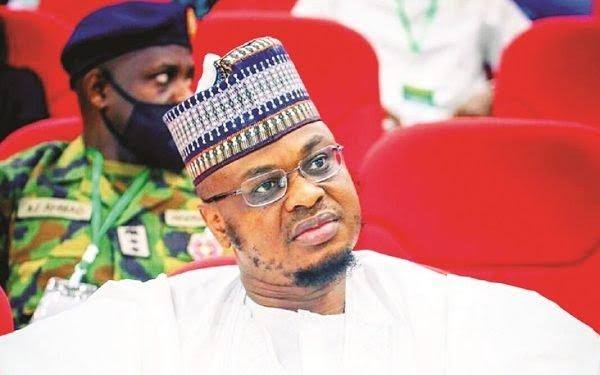Broadband supports the development of the digital economy, hence, the reason the Nigerian Communications Commission (NCC), has, over the years, initiated a number of initiatives and policies to achieve 70 per cent broadband penetration by 2025.
One of such policies is the National Broadband Plan 2020-2025, which aimed to achieve 60 per cent fibre to towers connection; minimum of 120,000kmfibre infrastructure; fibre along all federal and state roads; fibre along 90 per cent of Local Government Area roads; connecting 100 per cent tertiary institutions to fibre and delivering 25 Megabyte per second internet speed by 2025.
Stakeholders have said that achieving these targets will ultimately lead to achieving the 70 per cent broadband penetration targets by 2025, but it would require the adoption and implementation of ‘the Dig one Policy’.
The lead executive, Policy Implementation Assisted Forum (PIAFo), Omobayo Azeez, told LEADERSHIP that the ‘Dig Once’ Policy is imperative to deal with the bitter reality of telecoms sector anywhere in the world. “The reality is that network expansion is often constrained by high cost of deploying infrastructure and fibre optic is the backbone infrastructure for network expansion and high Quality of Service (QoS),” he added.
While the policy is yet to be operational in Nigeria, the lead executive however advocated that relevant stakeholders including various agencies of governments, operators, equipment manufacturers, and internet service providers should be carried along during the formulation stage, which is scheduled to take place in December 2022.
In the same vein, director, technical (Fibre Operations), Global Investment and Communications Limited (GICL), Olabode Ojo, said the Dig-once policy is a practice that minimize the number and scale of excavations along highway rights-of-way when installing telecommunications infrastructure.
The ‘Dig Once’ policy ensures the alignment between all stakeholders involved in installing ducts (and connectivity) during the construction phase, Ojo said, adding that it guarantees that all future developments are connected-up and ensure that future-proofed ‘in-ground’ connectivity is installed once only.
It also enables coordination between utility companies and connectivity providers during highways and street works, and other major infrastructure projects, thereby reducing the need for multiple excavations; and allowing efficient installation of conduits and connectivity, including ensuring the provision of all necessary conduits and simple retrofitting, the director explained.
He disclosed that the G20 Countries formed a Global Smart Cities Alliance (GSCA) in 2019 which establishes and advances global policy norms to help accelerate best practices, mitigate potential risks, and foster greater openness and public trust, adding that it has been embraced by several countries with adoption at various levels.
“The policy guideline developed by the GSCA has been adopted by 40 countries across Europe, the United Kingdom, Asia, South America, and Africa. In the USA, 11 states have enacted Dig once policies. In Nigeria, the NCC has been at the forefront of promoting broadband penetration via several initiatives and policies such as Open Access, Infraco and Dig Once.
“The FCT, Lagos and Kaduna state governments have also been in the process of implementing shared infrastructure approaches. However, only the FCT seems to have a proper dig-once policy in place.
“In Lagos, the ongoing build of phase 1 (3000km) Lagos State Unified Duct Infrastructure Project (LASG-UDIP) adopted a Public Private Partnership model where the concessionaire is bearing the entire cost of laying 6way x 40mm HDPE ducts, while the state government provides enabling environment for the project. The plan is for any interested operator to lease a sub duct with a duct reserved for the LASG government for the smart city initiatives,” he revealed.
Speaking on the benefits of Dig once policy, Ojo said, it helps to protect newly and recently paved roads and sidewalks and enhancing the uniformity of construction; ensure efficient, non-duplicative placement of infrastructure in the public ROW; reduce overall costs of all underground work in the public ROW; facilitate private communications network deployment by reducing construction costs and environmentally friendly as it enhances a greener planet.
The director, however, disclosed that a number of issues may hinder the adoption of the Dig Once policy.
“These include but are not limited to lack of coordination among stakeholders (authorities, operators and service providers); lack of operator transparency as companies have reacted positively to dig once policies, but some are not ready to give competitors easy access to their robust fiber connections; unavailability of As-built GIS Data which is another requirement for effective dig once policies because proprietary data prevents collaboration and causes cascading delays and short-sighted governmental budgeting, as additional budget requirements to achieve Dig-once is seen as creating more operational overhead, despite the long-term benefits far outweighing the short-term costs,” he explained.
Ojo however appealed to the federal government for speedy formulation and implementation of the Dig Once Policy, adding that the many benefits of Dig once cannot be overemphasised.





